Below is the witness list for a field hearing that will be held before the Senate’s Committee on Energy and Natural Resources on Thursday, August 27, 2015 at 11:30 a.m. PDT in the Pigott Auditorium of Seattle University (located at Su Campus Walk). The purpose of the hearing is to receive testimony on opportunities to improve the organizational response of the Federal agencies in the management of wildland fires.
Tag: hearing
May 5: Senate hearing about wildfire management
(UPDATED at 11:42 a.m. MDT, May 5, 2015)
A video recording of this morning’s hearing by the U.S. Senate Committee on Energy and Natural Resources about wildfires has been posted along with the formal written statements of the five witnesses. These all went up on the website much more quickly than we have seen in the past.
The video and the written statements can be seen here.
I was only able to see portions of the statements by the witnesses, and missed the following Q&A period. One part that I found interesting was what Bob Eisele, a retired Watershed and Fire Analyst with the County of San Diego said about technology. Basically Mr. Eisele, who spoke only occasionally referring to notes, said, “We need to know where the fire is”, and “We need to know where the firefighters are”, referring to real-time tracking of the fire and firefighting resources, what I call the Holy Grail of Wildland Firefighter Safety.
U.S. Forest Service Chief Tomas Tidwell predictably said, “We have the resources”, and then mentioned engines, large air tankers, and MAFFS military air tankers.
Dr. Sharon Hood, a Post-Doctoral Researcher at the University of Montana, made an interesting presentation about how low-severity fires can help provide ponderosa pine with defenses against bark beetle attacks, and that excluding frequent fire from
the system greatly decreases resistance from bark beetle outbreaks.
****
(Originally published at 8 p.m. MDT, May 4, 2015)
On Tuesday, May 5 the U.S. Senate Committee on Energy and Natural Resources will hold a hearing “to receive testimony on the Federal government’s role in wildfire management, the impact of fires on communities, and potential improvements to be made in fire operations.”
It is scheduled to begin at 10 a.m. EDT, and will be viewable on a live webcast. These hearings are recorded and can usually be replayed a day or two later.
The panel of witnesses will include:
-
Mr. Thomas TidwellChief, U.S. Forest ServiceU.S. Department of Agriculture
-
Dr. Stephen PyneRegents’ Professor & Distinguished Sustainability ScholarSchool of Life Sciences, Arizona State University
-
Dr. Sharon HoodPost-Doctoral Researcher, College of Forestry & ConservationUniversity of Montana
-
Mr. Bruce HallinDirector of Water Rights and ContractsSalt River Project
-
Mr. Bob EiseleWatershed and Fire AnalystCounty of San Diego, CA – Retired
Thanks and a tip of the hat go out to Kelly.
Secretary of Interior’s comments during Senate hearing
On February 24 Sally Jewell, Secretary of the Department of the Interior, testified at a hearing of the Senate Energy and Natural Resources Committee. The primary focus of the hearing was the Department’s budget for Fiscal Year 2016. The video of the webcast can be seen here. The proceedings begin at 18:40.
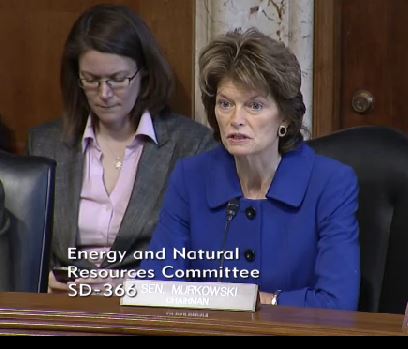
The Chair of the Committee, Lisa Murkowski of Alaska, recently threatened to cut the budget of the Department of the Interior in retaliation for the Obama administration’s proposal to set aside more than 12 million acres in Alaska’s Arctic National Wildlife Refuge as wilderness. A severe budget reduction could result in the loss of jobs within the Department. Senator Murkowski began the hearing by stating her reservations with the decision to designate the wilderness areas.
Below are excerpts from Secretary Jewell’s prepared remarks on the subject of wildland fire. The complete text is here:
****
“The budget renews the call for a new funding framework for wildland fire suppression, similar to how the costs for other natural disasters are met. The initiative proposes base level funding of 70 percent of the 10-year average for suppression costs within the discretionary budget and an additional $200 million available in the event of the most severe fire activity, which comprises only one percent of the fires but 30 percent of the costs. Wildland fire continues to be one our most important land management challenges. In January I issued Secretarial Order 3336 that recognizes the critical importance of fire in protecting, conserving, and restoring the health of the sagebrush-steppe ecosystem on which rural economies, wildlife – including the sage grouse – and a way of life depend. Shortly, we will be releasing our strategy for the 2015 fire season, to be followed by a long-term strategy for addressing rangeland fire prevention, management, and restoration. On a broader scale, the Department is firmly committed to the National Wildland Fire Cohesive Strategy and the three goals of restoring and maintaining fire-resilient landscapes, creating fire adapted communities, and safe and effective operations. In support of those goals, the budget reflects an integrated approach to wildland fire management, including $30.0 million for a Resilient Landscapes program to create landscapes that are resilient to wildfire through long-term, landscape scale, place-based projects. Resilient Landscape program projects will be accomplished through collaborative partnerships that include non-fire bureau resources and land management programs along with other Federal, tribal, State and non-governmental partners. The budget continues to include funding for the Fuels Management program to improve the integrity and resilience of forests and rangelands, contribute to community adaptation to fire, and improve our ability to safely and appropriately respond to wildfires.
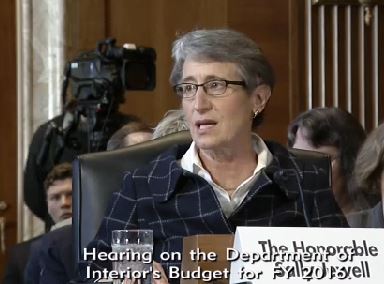
[…]
The 2016 request for the Department-wide Wildland Fire Management program is $805.5 million without the proposed fire cap adjustment, and $1.05 billion including the adjustment. The request includes $268.6 million for fire suppression within the base budget, which is 70 percent of the 10 year suppression average spending. The cap adjustment of $200.0 million would only be used for the most severe fires, since it is one percent of the fires that cause 30 percent of the costs. The new budget framework for Wildland Fire Management eliminates the need for additional funds through the FLAME Act.
The 2016 budget requests $30.0 million in a new Resilient Landscapes subactivity to build on resilient landscapes activities supported by Congress in 2015. Congress provided $10.0 million for resilient landscapes activities in the 2015 Omnibus Appropriations Act by designating that amount within Fuels Management. While fuels treatments and resilient landscapes activities are complementary and synergistic, they also have distinct differences, including the methodology for prioritizing place-based projects and a leveraged funding requirement for resilient landscapes. Establishing a separate subactivity for Resilient Landscapes will assist the Department and Wildland Fire Management bureaus in tracking funds obligated and program accomplishments. The $20.0 million increase in funding will enable the Wildland Fire Management program to take better advantage of the shared goals of bureau resource management programs to treat large landscapes to achieve and maintain fire-adapted ecosystems that both reduce the threat of catastrophic wildfire and achieve restoration and other ecological objectives. The increase for Resilient Landscapes is partially offset with a program realignment of $17.7 million in the Fuels Management program from 2015; total funds for the combined Fuels Management and Resilient Landscapes subactivities are $14.3 million above 2015.”
Senate hearing on USFS fire funding, Wednesday morning
Tuesday, July 15 at 10:30 ET the Senate Energy and Natural Resources Committee will hold a hearing on the Administration’s budget request of $4.8 billion for the U.S. Forest Service in fiscal year 2015, which begins October 1, 2014. One of the prime topics of discussion is expected to be the President’s proposal to fund some wildfires in a manner similar to other natural disasters, keeping the funds separate from non-fire activities. This method of funding is supported by western lawmakers and the Western Governors’ Association, but there is opposition from some Republican politicians.
Several competing bills have been introduced that have similar provisions. They would all protect the US. Forest Service and the Department of the Interior routine budget items from being pillaged in order to pay firefighting bills. Senator John McCain last week introduced another bill with many of the same goals, but in addition his legislation would encourage timber harvesting and thinning, while streamlining some of the environmental restrictions that might otherwise slow down the projects.
As usual in hearings like this, it is likely that the topic of federal air tankers will be discussed.
The Senate Energy and Natural Resources Committee hearing will be web-cast live at 10:30 ET, Tuesday. (the link was corrected)
Senate hearing on tight budgets for forest management
 On November 5 the Senate Subcommittee on Conservation, Forestry and Natural Resources held a hearing titled, “Shortchanging Our Forests: How Tight Budgets and Management Decisions Can Increase the Risk of Wildfire”. A video recording of the hearing can be viewed at the subcommittee’s website.
On November 5 the Senate Subcommittee on Conservation, Forestry and Natural Resources held a hearing titled, “Shortchanging Our Forests: How Tight Budgets and Management Decisions Can Increase the Risk of Wildfire”. A video recording of the hearing can be viewed at the subcommittee’s website.
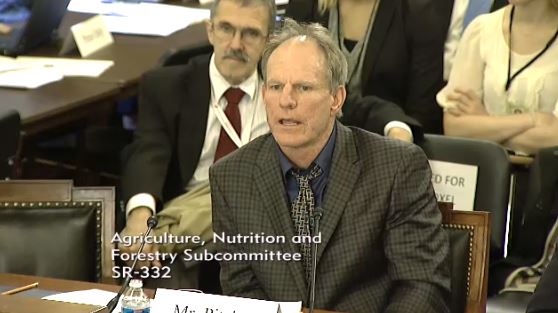
It was held in a small room where the five witnesses outnumbered the four Senators. Generally, the attendees recommended that the government must invest more in forest thinning, prescribed fire, and hazard reduction projects.
Below are some excerpts from the written testimony of a few witnesses. Their statements can be downloaded at the website.
From Jim Hubbard, USFS Deputy Chief, State and Private Forestry:
When a wildfire starts within or burns into a fuel treatment area, an assessment is conducted to evaluate the resulting impacts on fire behavior and fire suppression actions. Of over 1,400 assessments conducted to date, over 90 percent of the fuel treatments were effective in changing fire behavior and/or helping with control of the wildfire (USFS, Fuels Treatment Effectiveness Database).
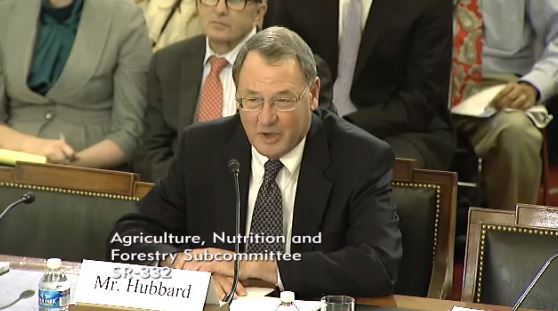
From Sallie Clark, El Paso County Commissioner, Colorado:
A 2007 Congressional Budget Office study indicates that every dollar invested in healthy forest and wildfire mitigation will save more than five dollars in future disaster losses.
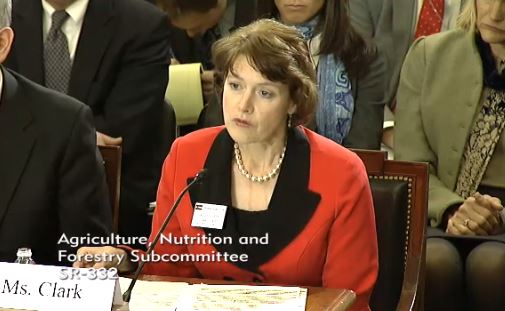
From Christopher Topik, Director, Restoring America’s Forests, The Nature Conservancy:
Our current approach to wildland fire and forest management creates a false choice, pitting the viability of one against the other. In reality, we cannot afford to short-change either. The potential costs are too great.
SUMMARY OF KEY RECOMMENDATIONS
I. Budgetary
1. Increase federal funding for hazardous fuels reduction, Collaborative Forest Landscape Restoration and associated proactive federal land management operations and science
2. Create and fund a new federal fire suppression funding mechanism to free up resources for proactive management referenced above
3. Permanently authorize stewardship contracting authority
4. Increase capacity of states and communities to become fire adapted
5. Increase research on economic, social and ecological impacts of forest investment
II. Management Decisions
6. Seek policy adjustments that foster innovation and improvement in NEPA implementation, thereby increasing the scale and quality of resulting projects and plans
7. Increase shared commitment and support for forest restoration by states and local governments
8. Enhance participation of additional sectors of society, such as water and power utilities, recreation and tourism, public health, and industrial users of clean water
9. Increase the safe and effective use of wildland fire
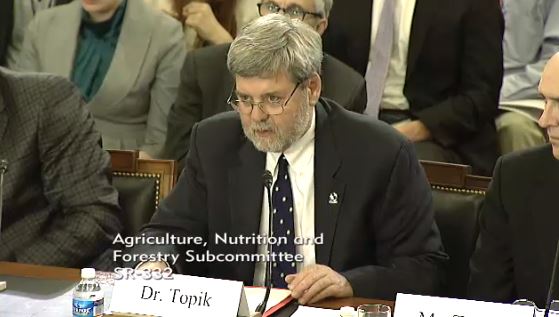
Hearings scheduled for fire-related bills
Two bills related to wildland fire will be evaluated in a Congressional hearing before the House Subcommittee on Public Lands and Environmental Regulation Thursday, April 11 at 10:00 a.m.
The first one is the “Healthy Forest Management and Wildfire Prevention Act”, H.R. 818 (Tipton):
To address the bark beetle epidemic, drought, deteriorating forest health conditions, and high risk of wildfires on National Forest System land and land under the jurisdiction of the Bureau of Land Management in the United States by expanding authorities established in the Healthy Forest Restoration Act of 2003 to provide emergency measures for high-risk areas identified by such States, to make permanent Forest Service and Bureau of Land Management authority to conduct good-neighbor cooperation with States to reduce wildfire risks, and for other purposes.
This bill would give the Governor of a state the power to conduct “emergency hazardous fuels reduction projects” in areas on National Forests that the Governor has designated as a “high-risk area” as a result of bark beetle epidemic, drought, or “the future risk of insect infestations or disease outbreaks”. This could occur with or without the approval of the federal government. The bill would also shorten the environmental review process for these projects.
The second bill is the “Catastrophic Wildfire Prevention Act of 2013”, H.R. 1345 (Gosar):
To address the forest health, public safety, and wildlife habitat threat presented by the risk of wildfire, including catastrophic wildfire, on National Forest System lands and public lands managed by the Bureau of Land Management by requiring the Secretary of Agriculture and the Secretary of the Interior to expedite forest management projects relating to hazardous fuels reduction, forest health, and economic development, and for other purposes. “Catastrophic Wildfire Prevention Act of 2013”
This bill uses wildfire prevention as an excuse to increase livestock grazing and timber harvest projects on federal land. Like the previous bill, it also shortens the environmental review process for these projects.


